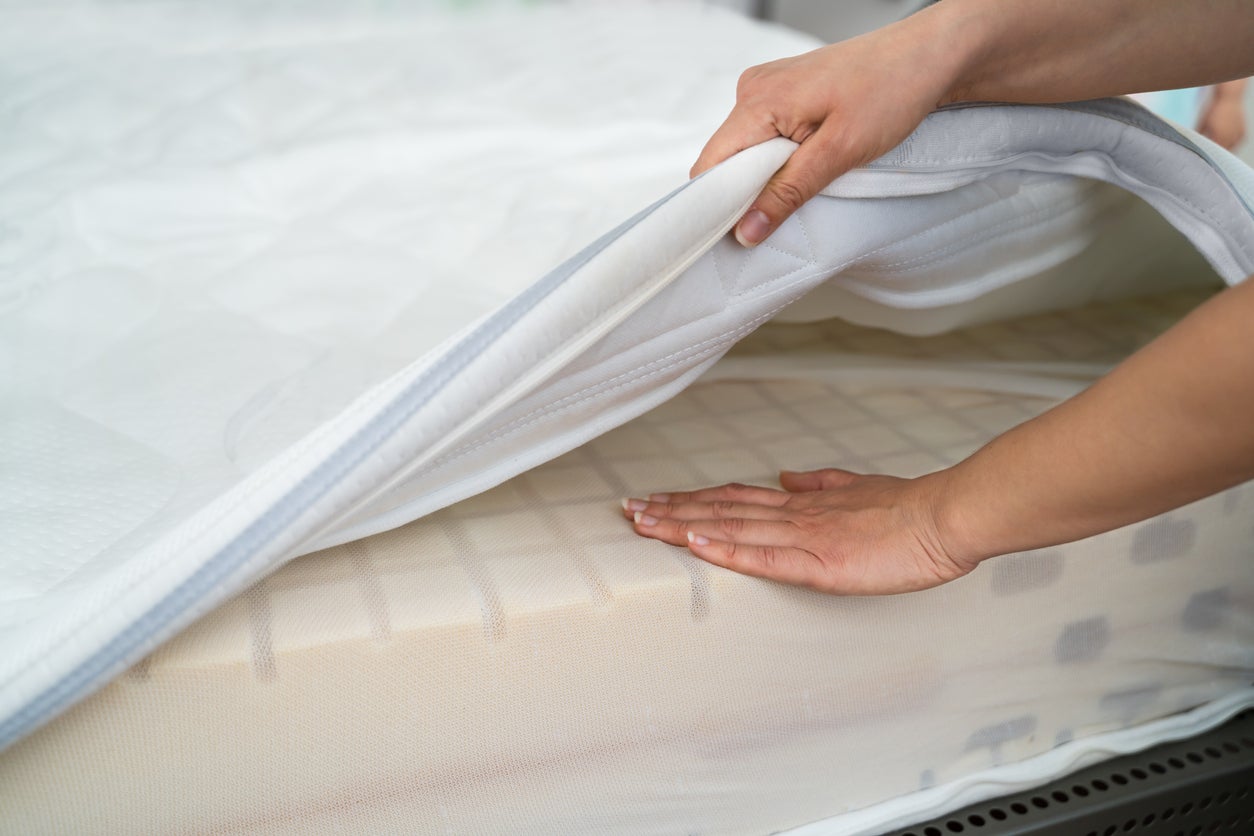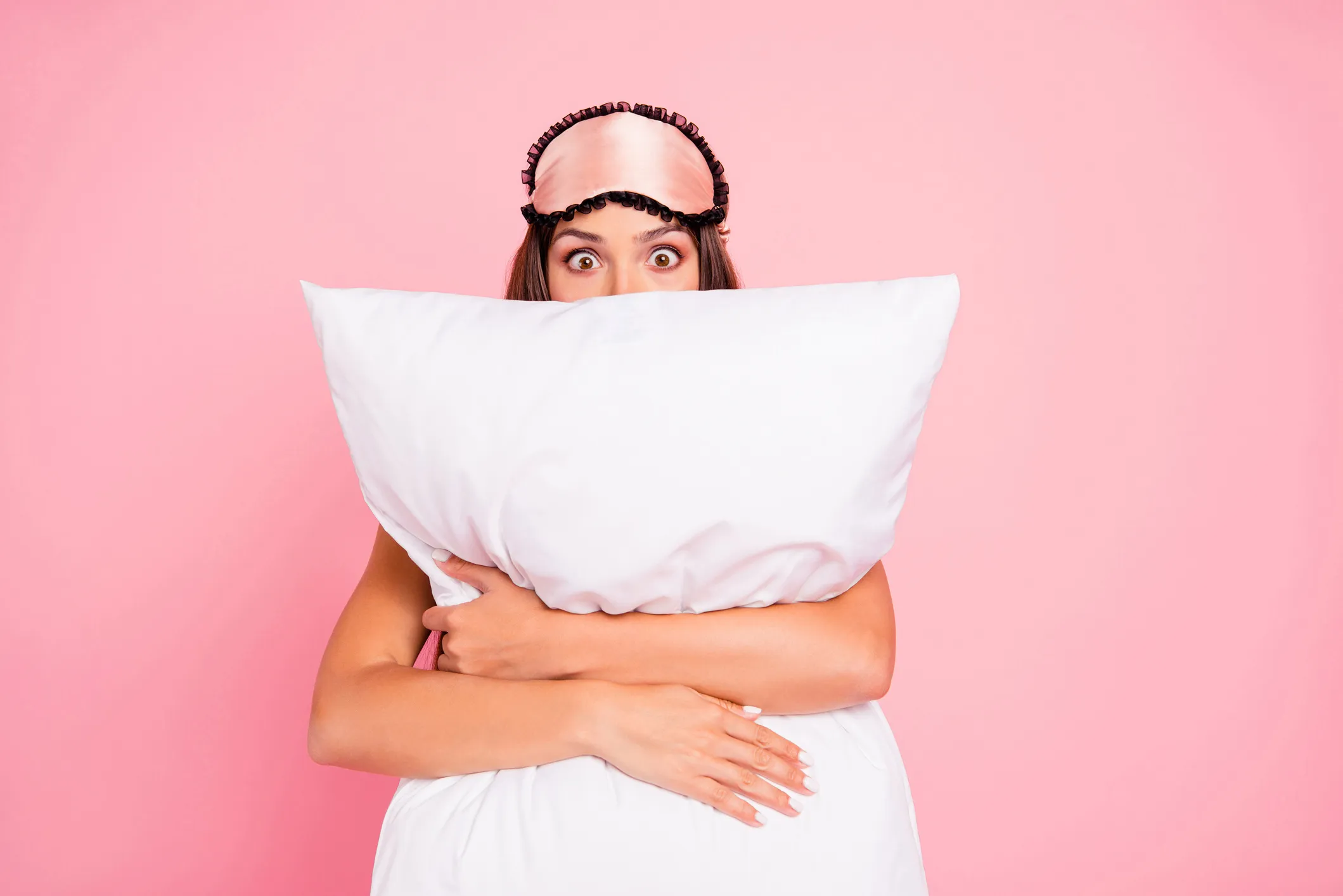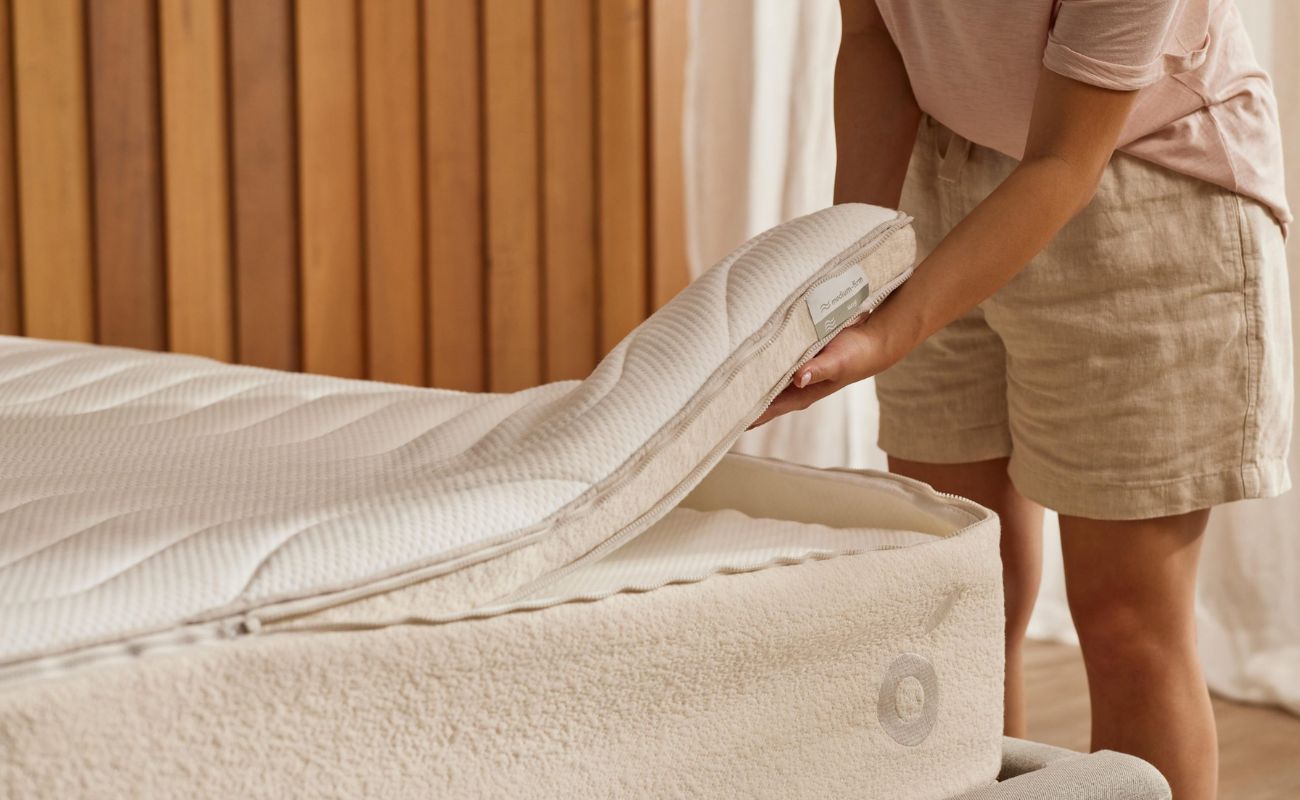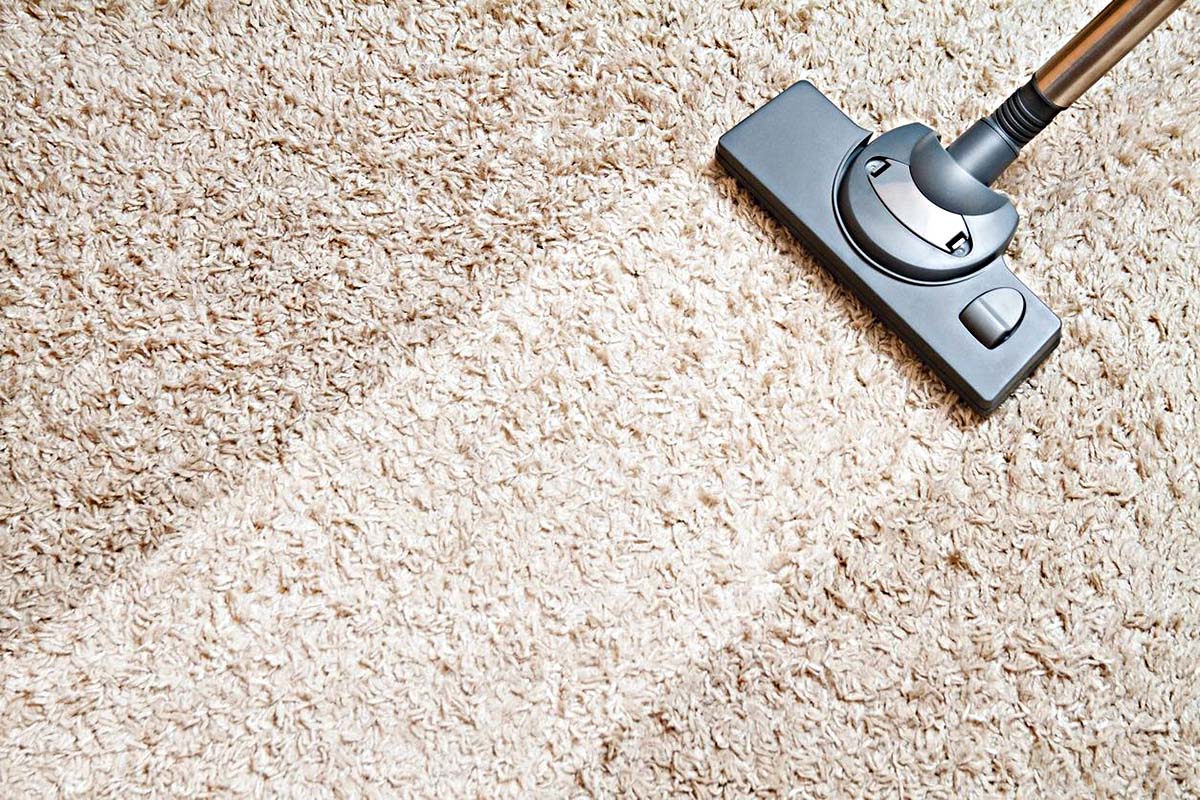Home>Furniture>Bedroom Furniture>How Often Do You Have To Change Your Mattress


Bedroom Furniture
How Often Do You Have To Change Your Mattress
Modified: December 7, 2023
Learn about the lifespan of bedroom furniture and find out how often you should replace your mattress for a rejuvenating sleep.
(Many of the links in this article redirect to a specific reviewed product. Your purchase of these products through affiliate links helps to generate commission for Storables.com, at no extra cost. Learn more)
Introduction
Choosing the right mattress is essential for a good night’s sleep and overall well-being. However, even the best mattress will eventually wear out and need to be replaced. The lifespan of a mattress depends on various factors such as its quality, usage, and care. Understanding when it’s time to change your mattress is crucial for maintaining a comfortable and supportive sleep surface.
In this article, we will explore the factors that influence the lifespan of a mattress and the signs that indicate it’s time for a replacement. We will also discuss how often you should change your mattress based on your sleep position and provide tips on how to extend its lifespan. So, let’s dive in and uncover all you need to know about the lifespan of your mattress.
Key Takeaways:
- Regularly assess your mattress for signs of wear such as sagging, discomfort, or allergies. Replace every 7-10 years for back sleepers, 5-7 years for side sleepers, and stomach sleepers.
- Extend mattress lifespan by using a protector, rotating regularly, and maintaining a consistent sleep environment. Invest in a quality mattress for better sleep and overall well-being.
Read more: How Often Should You Change Your Mattress?
Factors Influencing Mattress Lifespan
The lifespan of a mattress can vary greatly depending on several factors. Understanding these factors can help you make an informed decision when it comes to selecting a mattress that will stand the test of time. Here are the key factors that influence the lifespan of a mattress:
- Quality: The quality of the materials used in a mattress plays a significant role in determining its durability. A high-quality mattress is usually made with durable materials and may come with additional features like reinforced edges or advanced support systems, which can extend its lifespan.
- Usage: The frequency and intensity of mattress usage can impact its lifespan. A mattress that is used every night will have a shorter lifespan compared to one that is used occasionally in a guest room. Additionally, factors such as jumping on the bed or using it as a seating area can contribute to wear and tear.
- Weight: The weight of the individuals using the mattress can affect its lifespan. Heavier individuals may exert more pressure on the mattress, leading to faster wear and sagging. It’s important to choose a mattress that can adequately support the weight of the sleepers.
- Care and Maintenance: Proper care and maintenance can significantly extend the lifespan of a mattress. This includes rotating the mattress regularly, using a mattress protector to prevent stains and spills, and keeping it clean and free from dust mites. Following the manufacturer’s care instructions is crucial to preserving the integrity of the mattress.
By considering these factors, you can choose a mattress that is well-suited to your needs and can provide long-lasting comfort and support. It’s important to note that while these factors influence the overall lifespan of a mattress, it’s still advisable to periodically assess the condition of your mattress to ensure it is providing the optimal sleep surface.
Signs That Your Mattress Needs to be Replaced
As your mattress ages, it may start to show signs of wear and tear. Recognizing these signs is crucial in determining when it’s time to bid farewell to your old mattress and invest in a new one. Here are the key signs that indicate your mattress needs to be replaced:
- Sagging: One of the most noticeable signs that your mattress has reached the end of its lifespan is sagging. Over time, the materials in the mattress can break down, resulting in visible sagging areas. If you find yourself sinking into the mattress or waking up with back pain, it’s a clear indicator that the mattress is no longer providing adequate support.
- Visible Wear and Tear: Inspect your mattress for any visible signs of wear and tear. This includes frayed edges, lumps, or protruding springs. These physical signs indicate that the mattress is no longer in its optimal condition and may affect your sleep quality and comfort.
- Uncomfortable Sleep: If you consistently wake up feeling tired, achy, or restless, it could be a result of an uncomfortable and worn-out mattress. Your mattress should provide a supportive and comfortable surface for a good night’s sleep. If it fails to do so, it may be time to consider a replacement.
- Allergies or Respiratory Issues: As mattresses age, they can become a breeding ground for dust mites, allergens, and bacteria. If you find yourself experiencing increased allergies, respiratory issues, or waking up with a stuffy nose, it might be due to the accumulation of allergens in your mattress. In such cases, replacing the mattress can help alleviate these symptoms.
It’s important to note that these signs may vary depending on the type of mattress you have. For example, memory foam mattresses may show signs of deterioration differently compared to innerspring mattresses. Nevertheless, if you notice any of these signs or if your mattress is older than its recommended lifespan, it’s a good idea to start considering a replacement to ensure you have a supportive and comfortable sleep surface.
It is recommended to change your mattress every 7-10 years, as this is the average lifespan of a mattress. However, if you are experiencing discomfort or noticing signs of wear and tear, it may be time to replace it sooner.
Frequency of Mattress Replacement Based on Sleep Position
Your sleep position can affect the wear and tear experienced by your mattress, ultimately impacting how often you should replace it. Different sleep positions place varying levels of pressure and strain on the mattress, which can affect its longevity. Let’s explore the recommended frequency of mattress replacement based on sleep position:
- Back Sleepers: Back sleepers generally have a more balanced distribution of weight on the mattress, resulting in less strain. As a result, mattresses tend to last longer for back sleepers. On average, it is recommended to replace your mattress every 7 to 10 years if you primarily sleep on your back.
- Side Sleepers: Side sleepers put more pressure on specific areas of the mattress, such as the hips and shoulders. This increased pressure can lead to more significant wear and sagging over time. To ensure proper support and comfort, it is advisable for side sleepers to replace their mattress every 5 to 7 years.
- Stomach Sleepers: Stomach sleepers place strain on their lower back and pelvis, which can cause the mattress to lose its support over time. It is recommended for stomach sleepers to replace their mattress every 5 to 7 years to maintain optimal comfort and spinal alignment.
It’s important to note that these recommendations are general guidelines, and the actual lifespan of a mattress may vary depending on factors such as quality, usage, and care. Additionally, personal preferences and comfort levels play a role in deciding when to replace a mattress. If you notice significant signs of wear or discomfort regardless of your sleep position, it may be time to consider replacing your mattress, even if it falls within the recommended lifespan.
Remember, investing in a new mattress is an investment in your sleep quality and overall well-being. By replacing your mattress at the appropriate time, you can ensure you have a comfortable and supportive sleep surface that promotes restful sleep and rejuvenation.
How to Extend the Lifespan of Your Mattress
While the lifespan of a mattress is influenced by various factors, there are steps you can take to maximize its durability and extend its lifespan. Here are some tips to help you maintain your mattress and ensure it lasts as long as possible:
- Use a Mattress Protector: Investing in a mattress protector is a simple yet effective way to protect your mattress from spills, stains, and moisture. A good quality mattress protector creates a barrier between your body and the mattress, preventing sweat, dead skin cells, and allergens from seeping into the mattress.
- Rotate and Flip Regularly: Most mattresses benefit from regular rotation or flipping to distribute the wear evenly. This prevents excessive sagging, depressions, and uneven wear patterns. Follow the manufacturer’s guidelines regarding rotation or flipping to ensure proper maintenance.
- Avoid Jumping on the Bed: While it may be tempting, refrain from using your mattress as a trampoline. The excessive weight and impact can damage the internal components of the mattress, reducing its lifespan.
- Keep the Mattress Clean: Regularly clean your mattress to remove dust, dirt, and allergens. Use a vacuum cleaner with an upholstery attachment to thoroughly clean the mattress surface. You can also spot clean any stains using a mild detergent and water, but be sure to check the manufacturer’s instructions for specific cleaning recommendations.
- Use a Supportive Bed Frame: A sturdy and supportive bed frame is essential for the longevity of your mattress. The frame should provide adequate support and prevent sagging, which can lead to premature wear and tear.
- Avoid Overloading: Avoid placing excessive weight on your mattress, such as heavy furniture or stacks of books. This can cause the mattress to sag and shorten its lifespan.
- Maintain a Consistent Sleep Environment: Keep your bedroom temperature and humidity levels consistent. Fluctuating temperatures and high humidity can promote mold and mildew growth, which can damage your mattress.
- Pay Attention to Warranty: Read and understand the warranty information provided by the mattress manufacturer. Follow their recommendations for care and maintenance to ensure the warranty remains valid. If you notice any defects or issues, contact the manufacturer promptly.
By following these tips and taking proper care of your mattress, you can significantly extend its lifespan, ensuring that you get the most out of your investment in both comfort and quality sleep.
Read more: How Often Should You Change Mattress
Conclusion
Choosing a quality mattress and understanding when it’s time to replace it are essential for ensuring a comfortable and supportive sleep experience. The lifespan of a mattress can vary depending on factors such as quality, usage, and care. By recognizing the signs of wear and following the recommended guidelines, you can determine when it’s time to replace your mattress and invest in a new one.
Factors such as sagging, visible wear and tear, uncomfortable sleep, and allergies are clear indicators that your mattress needs to be replaced. Additionally, the frequency of mattress replacement can be influenced by your sleep position, with back sleepers typically needing to replace their mattress every 7 to 10 years, side sleepers every 5 to 7 years, and stomach sleepers every 5 to 7 years.
To extend the lifespan of your mattress, proper care and maintenance are key. Using a mattress protector, rotating and flipping the mattress regularly, avoiding jumping on the bed, and keeping the mattress clean are all important steps to maximize its durability. Additionally, using a supportive bed frame, avoiding overloading, maintaining a consistent sleep environment, and paying attention to the warranty provided by the manufacturer are all factors that can contribute to a longer lifespan for your mattress.
Remember, investing in a mattress is an investment in your sleep quality and overall well-being. By being aware of the signs that your mattress needs to be replaced and taking care of it properly, you can ensure a comfortable and supportive sleep surface that promotes restful sleep. So, evaluate your mattress regularly, consider your sleep position, and take the necessary steps to extend its lifespan. Your body and mind will thank you for it.
Frequently Asked Questions about How Often Do You Have To Change Your Mattress
Was this page helpful?
At Storables.com, we guarantee accurate and reliable information. Our content, validated by Expert Board Contributors, is crafted following stringent Editorial Policies. We're committed to providing you with well-researched, expert-backed insights for all your informational needs.














